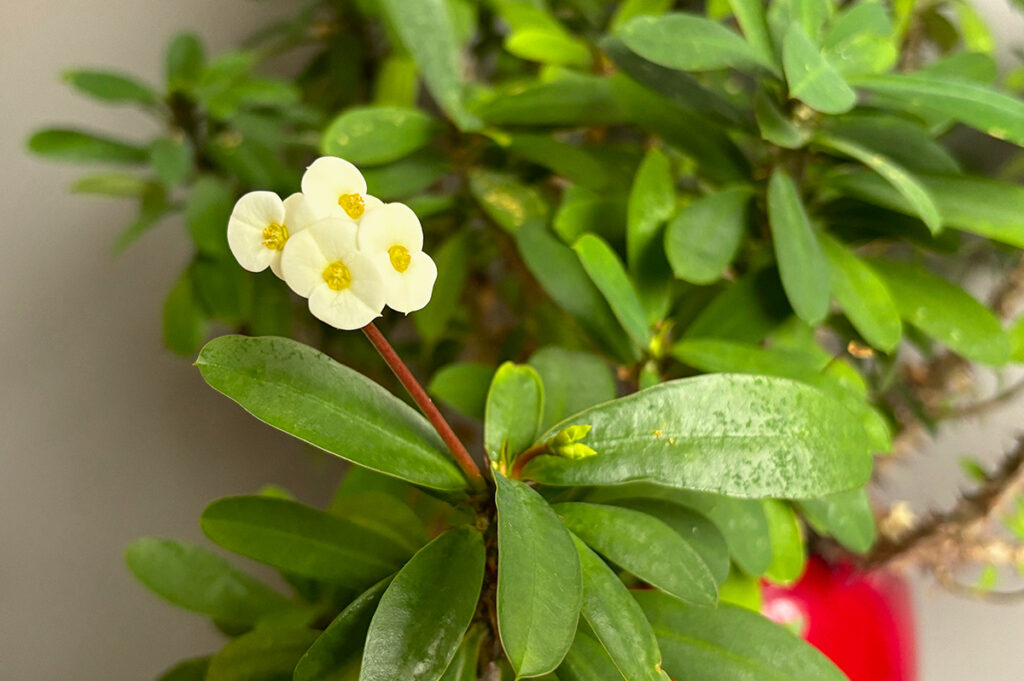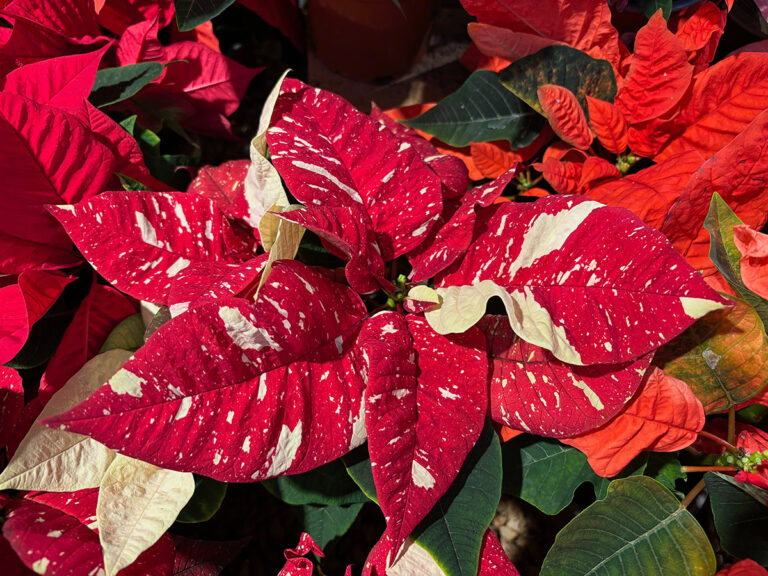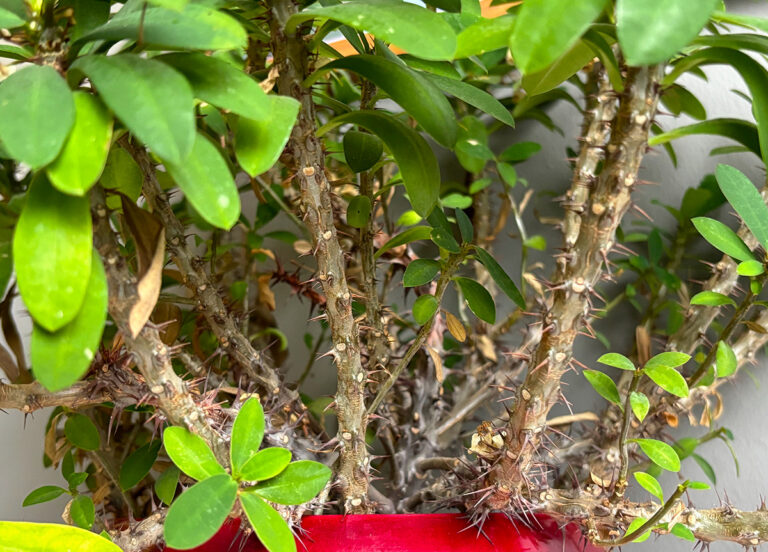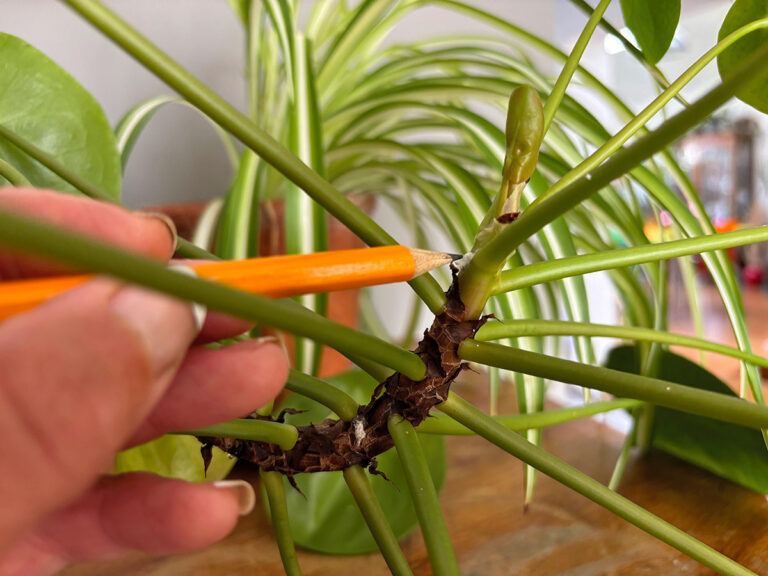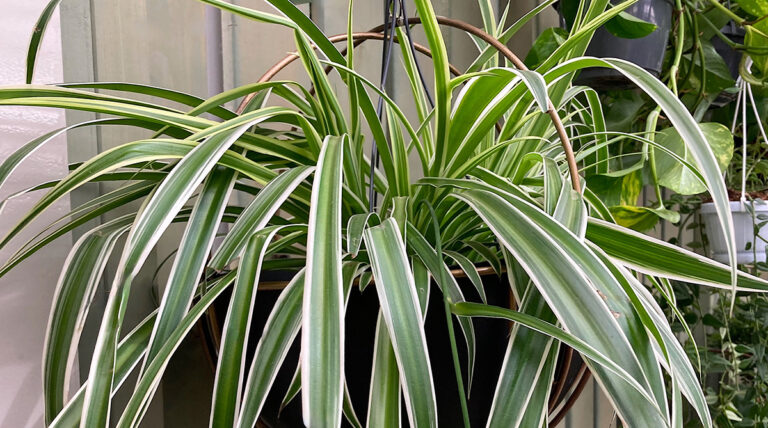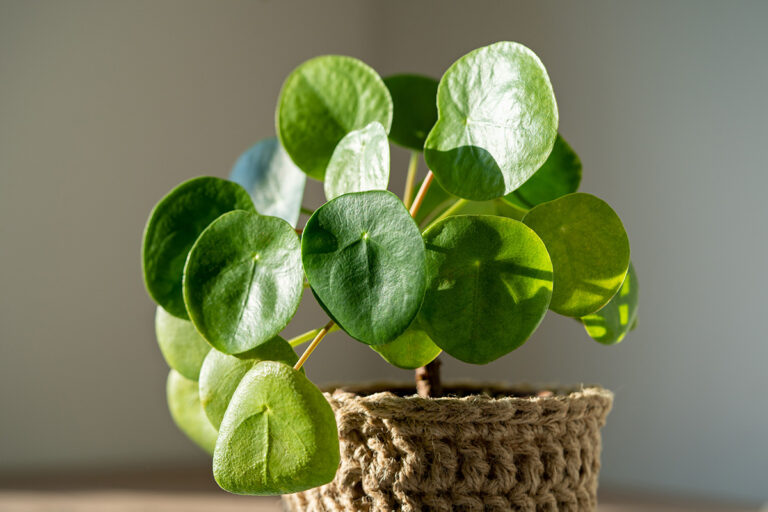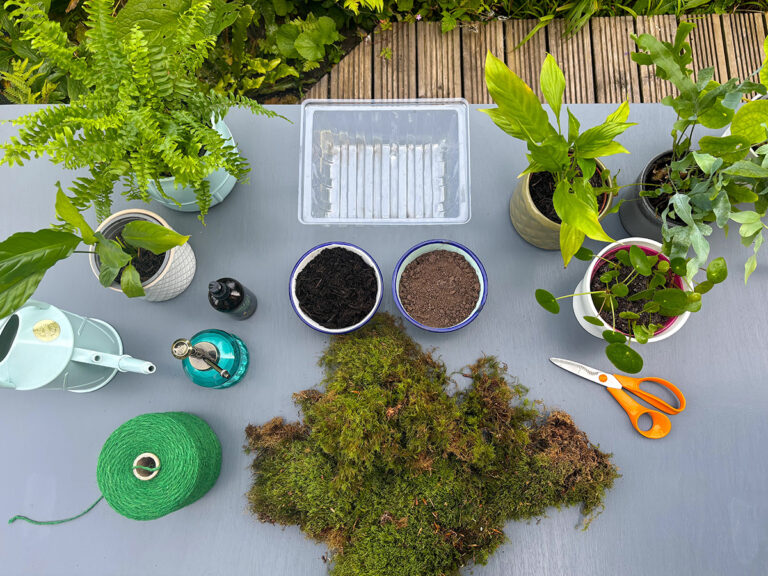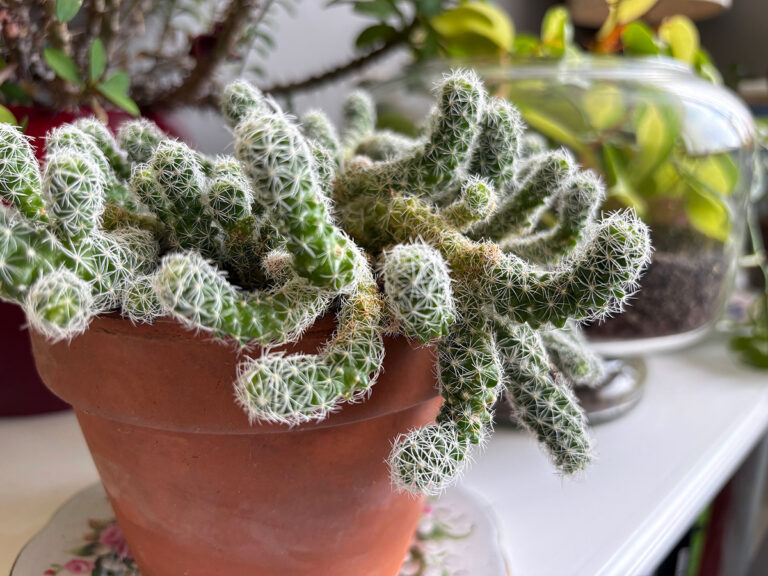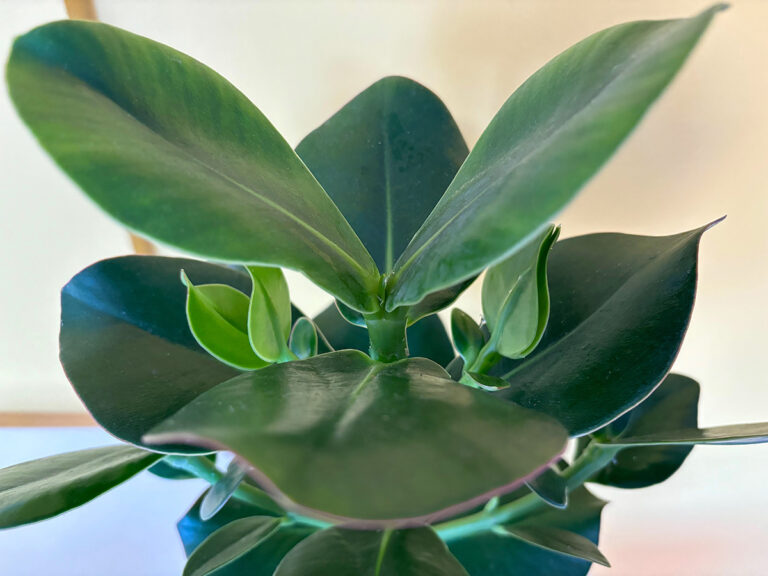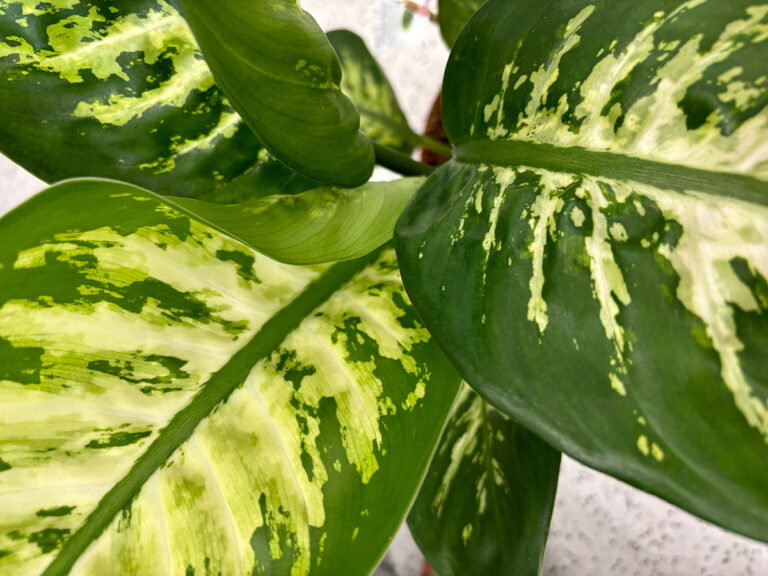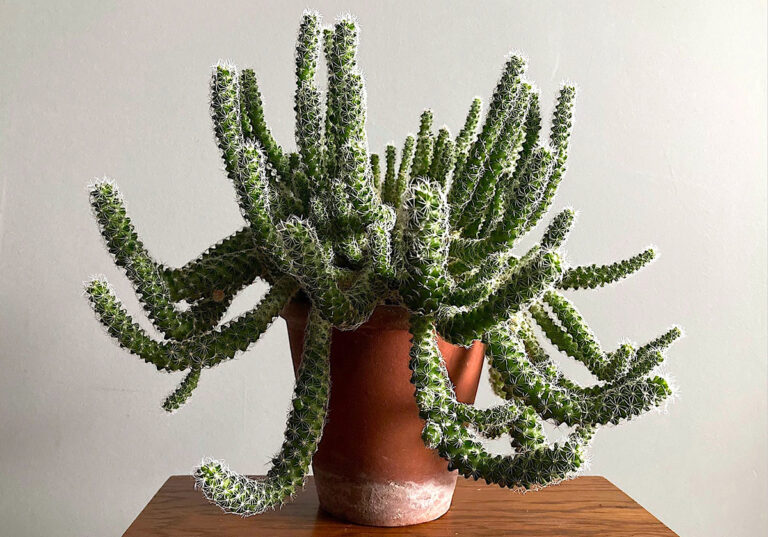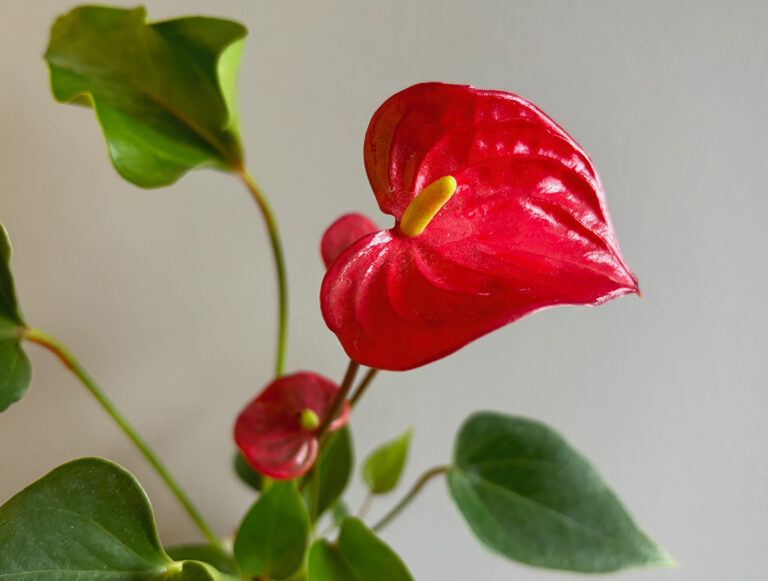Euphorbia milii is a prickly succulent shrub native to Madagascar in the Indian Ocean, 250 miles (402 kilometres) east of Mozambique on the southeast coast of Africa. It is a slow growing perennial houseplant with woody stems but in warm climes develops into a vigorous long-living but spiky hedge hosting small yellow flowers surrounded by colourful bracts which are often mistaken as the flowers.
Achieving the RHS Award of Garden Merit this unusual plant certainly is a houseplant to be marvelled but what do can we do to ensure it stays in tip top condition?
Temperature
Crown of Thorn’s ideal temperature range is around 18-24°C (65–75°F); it is hardy to lower temperatures but leaves may drop around 10°C (50°F) so avoid draughty windows where temperatures can fall over night. Try and keep the temperature consistent.
Light
This Euphorbia is a sun lover and will flower almost continuously if subject to three to four hours of direct sunlight a day; longer is even more favourable. Six to eight hours of sunlight is going to make this plant very happy. It needs direct light to stimulate flower buds to bloom. Turn the plant pot each week so all sides of the houseplant can receive light.
Darkness is equally important to this plant so make sure the room it is situated in is dark at night and not flooded by streetlight or light from a fish tank as this will hinder flowering.
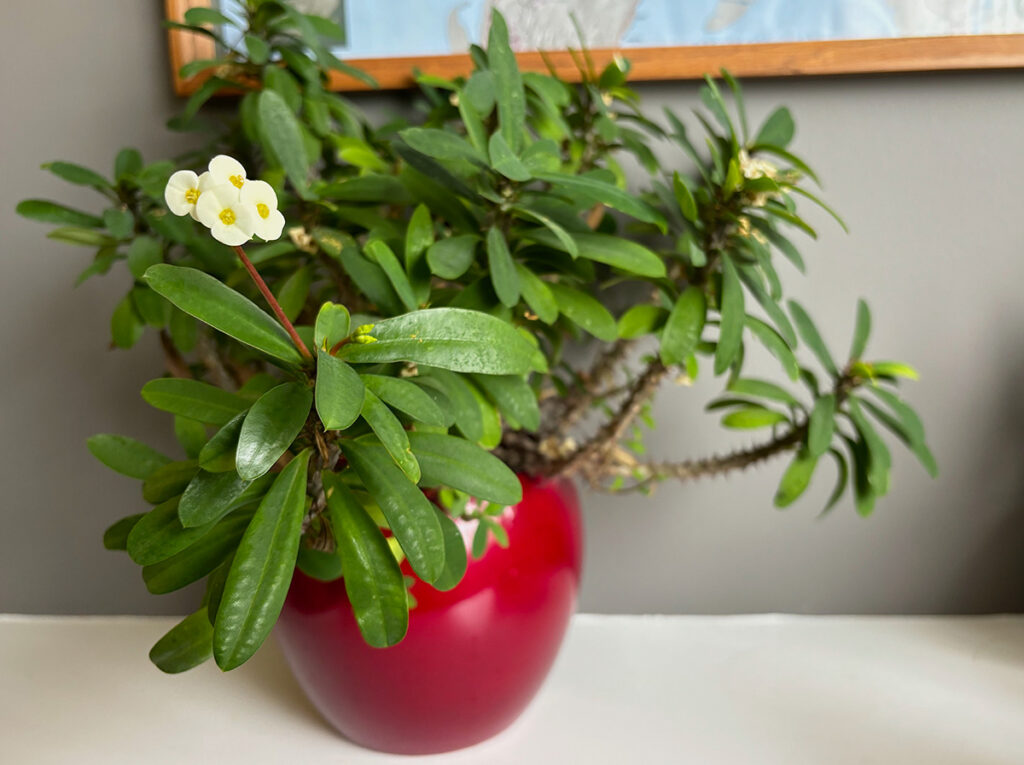
Water
As a succulent plant water sparingly; Crown of Thorns is pretty drought tolerant. Let the top half of the soil dry out before giving it a good soak. Pop your finger in the soil to check if it is dry or damp; the soil needs to dry out between waterings. Avoid letting the plant sit in water or roots may rot.
Rainwater from water butts can be very cold throughout winter. Houseplants prefer tepid water and can actually show physical damage from cold water shock such as wilting, leaves dropping or discolouring so fill a watering can from the water butt and leave it to acclimatise indoors to room temp before using it.
No need to mist, Crown of Thorns is happy in a dry environment rather than humid.
Soil
Crown of Thorns favours dry, sandy soil so use a cacti and succulent potting mix. Composts that retain water could encourage root rot so make sure the pot has drainage holes and let water flow through the soil and out the bottom of the pot.
Fertiliser
Throughout spring and summer feed once a month and then hold back in autumn and winter to give the plant a rest during its dormant period. Feeding is particularly helpful when the plant is flowering but make sure you use a specific houseplant feed which contains a dilute balance of nutrients; over fertilisation will have the opposite desired affect and stop the plant flowering.
Plantsmith’s Invigorating Cacti & Succulent Feed has an optimum ratio of nutrients for succulents and will encourage healthy growth. Shake the bottle then dilute 5ml (2 full pipettes) from the 100ml bottle into a litre of tepid rainwater or 4 pumps from a 500ml bottle then water the pot soil as usual.
Problem Solver
Crown of Thorns is toxic to humans and pets so handle with caution; its milky latex sap can cause skin irritations, blisters and even breathing difficulties. Avoid any contact between the sap and eyes and do not ingest. Always wear gloves when working with this plant.
Dropping leaves
Dropping leaves can be a completely natural occurrence, all part of the plant’s life cycle but it can also be an indicator that the plant is not happy. Drastic changes in temperatures or draughts can also cause leaves to fall; do not be afraid to move your plant to a different location within your home.
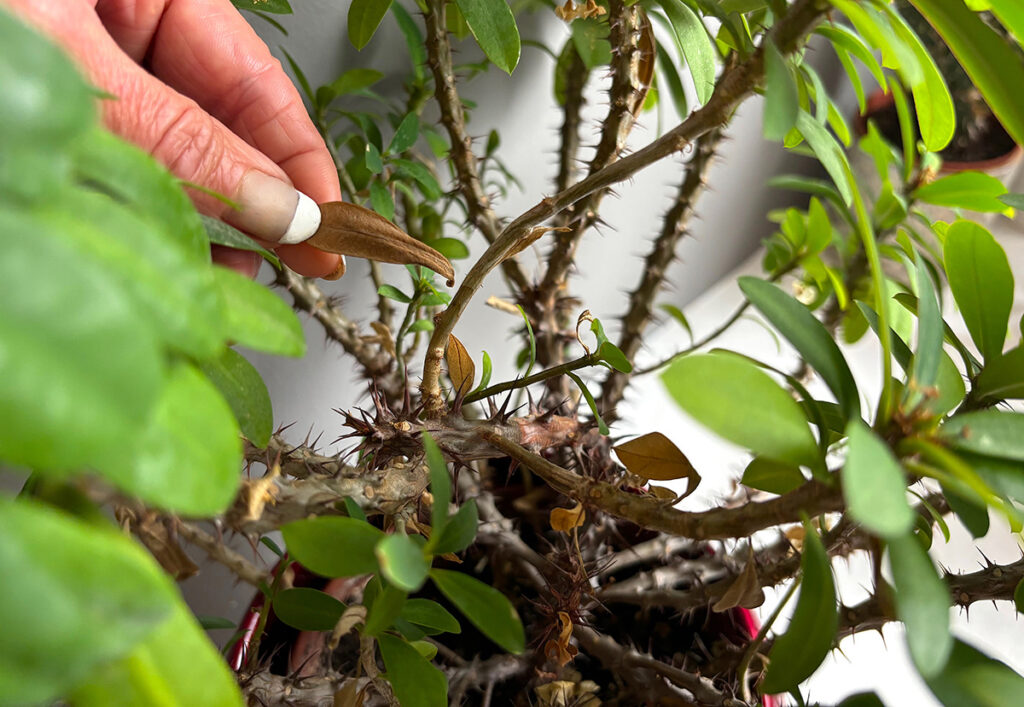
Yellow leaves
Yellow can be a sign of overwatering so if your plant is looking sickly ease off on the water and let the soil dry out; on the other hand long periods of sustained drought can also cause yellowing leaves.
Brown leaves
Leaves can become crispy if they have been scorched by relentless intense sun; if this occurs then move your plant to a more forgiving part of the house.
No flowers
Make sure your plant gets over four hours of sunlight a day, is kept in the dark at night and has a period of dormancy over winter; even plants need a rest to recharge their batteries! Also check the plant pot is not oversized for the size of the plant; Crown of Thorns favour being a little pot bound.
Pests
Euphorbia milii, crown of thorns is a tough plant and not overly bothered by pests but always be on the look out for the usual suspects; mealybug, scale insects, aphids, red spider mite and fungus gnats.
Top pot soil with Plantsmith’s Natural Fungus Gnat Barrier & Pot Topper to deter these pests from laying their eggs in the soil and spray regularly with Plantsmith’s Protecting Bug Control Spray which is 100% vegan friendly and cruelty free, providing plants with a wealth of essential nutrients.
Propagation
Crown of Thorns can be propagated from tip cuttings. Take care with the milky sap and always wear gloves when handling and it doesn’t hurt to protect your eyes too – you really do not want the sap to end up in your eye!
Put down some newspaper to catch sappy drips. Snip off 10cm at the tip of a stem and pop it in cold water for a few seconds to slow the sap dripping out of the end. Then leave the cutting to dry out on a sheet of kitchen paper; it will take a couple of days for the wound to heal over. Once the wound has sealed plant in cacti and succulent potting mix around the edge of a pot. Place in a warm bright spot and water only when the soil is dry; in a couple of months roots should form.
Fun Facts
The species name of Euphorbia milii: ‘milii’ references governor Baron Milius, of Bourbon Island (known as Reunion Island since 1848), who introduced the species to France in 1821.
The common name ‘Crown of Thorns’ has biblical associations as being part of the crown worn by Jesus Christ.
This houseplant is considered good luck in Thailand; its flowers are said to represent Chinese mythology’s eight saints.
If stressed with temperature fluctuations or severe drought this plant may lose all its leaves but will regrow leaves on new stems.
Crown of Thorns have a type of inflorescence flower cluster called cyathium which are cup-like clusters of modified fused leaves (bracts) ranging in colours from red, pink, orange, white and yellow, that enclose one female flower surrounded by five male flowers all combining to give the impression of one simple flower but in fact there are a lot of different elements going on here. Isn’t nature amazing?
